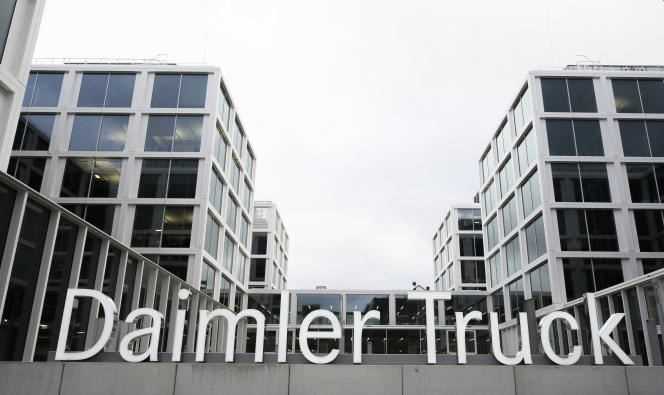The 20-meter-long offset printing machine sucks up the cardboard sheets at a breakneck pace. Each of them passes between huge cylinders, which each deposit a thin layer of color or varnish. Further on, another machine cuts and folds them. At Heidelberg Druckmaschinen, the world’s leading offset printing company, machines are checked with meticulous care. Besides the precision of the parts, the assembly itself is an art. “The adjustment of the cogs must be extremely precise: the slightest thousandth of a millimeter offset between the layers of ink is fatal for the final result”, details Achim Mergenthaler, director of operations. In the Wiesloch plant (Baden-Württemberg), machines are designed and manufactured for printers all over the world, and in particular for the group’s main market: China.
Business is going well. The generalization of digital media has not eliminated printing on paper. On the contrary, the Covid-19 pandemic has further boosted the consumption of cardboard packaging. “The less we buy directly in the store, the more important the packaging – or packaging – becomes. It becomes an essential element of the customer’s experience with the product, Mr Mergenthaler continues. Our machines make the packaging boxes for Apple products, for example. “ In addition, there are the specific requirements of certain customers. “The Chinese protect themselves against counterfeiting through packaging. Some luxury alcohol manufacturers develop extremely sophisticated cardboard boxes ”, explains Mergenthaler, who spent ten years in China to launch a production site in Shanghai, in 2005.
“Our most dynamic and profitable market”
“China is our most dynamic market, but also the most profitable”, underlines Rainer Hundsdörfer, CEO of this group which achieves an annual turnover of 1.9 billion euros, of which 15% in China. Like many German industrialists, Heidelberg has benefited greatly from the opening up of the Chinese economy for twenty years. Across the Rhine, the prosperity of the 2010s was largely based on the People’s Republic’s strong appetite for emblematic “made in Germany” capital goods, such as cars, machines, chemicals and advanced electronics. . Today, the Middle Kingdom is Germany’s leading trade partner (the latter representing 48.5% of European exports to China) … and, more and more, a formidable competitor in industrial sectors considered by Beijing as strategic.
You have 50.15% of this article left to read. The rest is for subscribers only.
